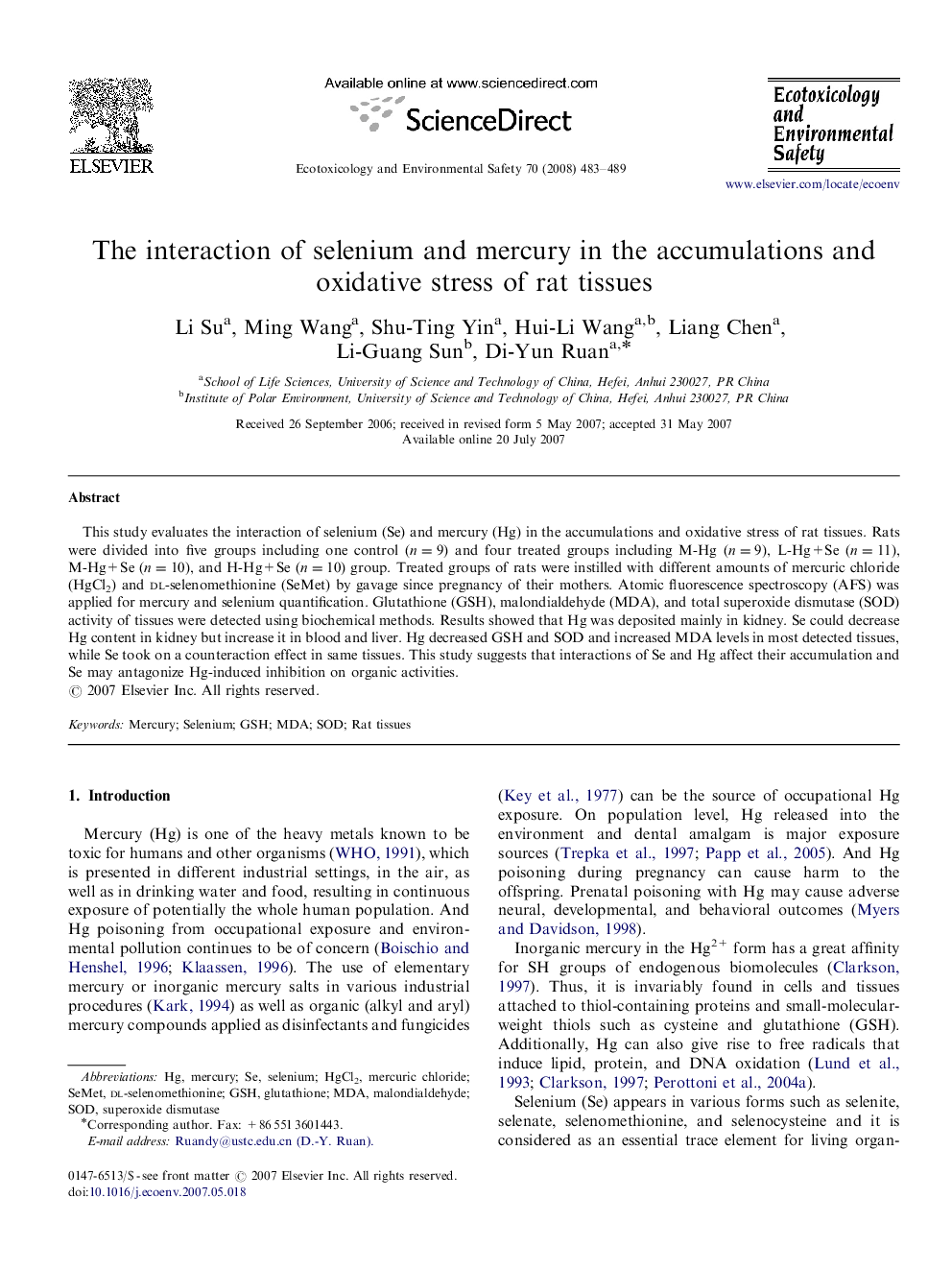| کد مقاله | کد نشریه | سال انتشار | مقاله انگلیسی | نسخه تمام متن |
|---|---|---|---|---|
| 4422093 | 1618989 | 2008 | 7 صفحه PDF | دانلود رایگان |

This study evaluates the interaction of selenium (Se) and mercury (Hg) in the accumulations and oxidative stress of rat tissues. Rats were divided into five groups including one control (n=9) and four treated groups including M-Hg (n=9), L-Hg+Se (n=11), M-Hg+Se (n=10), and H-Hg+Se (n=10) group. Treated groups of rats were instilled with different amounts of mercuric chloride (HgCl2) and dl-selenomethionine (SeMet) by gavage since pregnancy of their mothers. Atomic fluorescence spectroscopy (AFS) was applied for mercury and selenium quantification. Glutathione (GSH), malondialdehyde (MDA), and total superoxide dismutase (SOD) activity of tissues were detected using biochemical methods. Results showed that Hg was deposited mainly in kidney. Se could decrease Hg content in kidney but increase it in blood and liver. Hg decreased GSH and SOD and increased MDA levels in most detected tissues, while Se took on a counteraction effect in same tissues. This study suggests that interactions of Se and Hg affect their accumulation and Se may antagonize Hg-induced inhibition on organic activities.
Journal: Ecotoxicology and Environmental Safety - Volume 70, Issue 3, July 2008, Pages 483–489